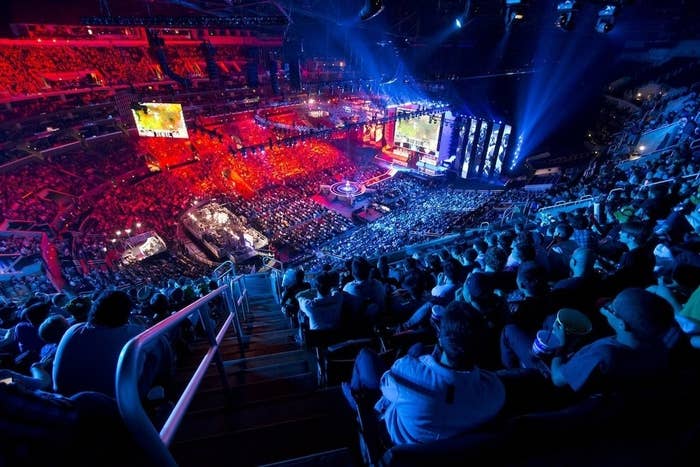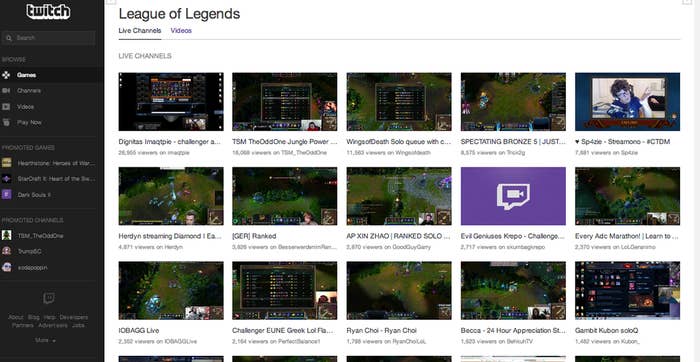
In 2011, the first World Finals of League of Legends, the preposterously popular online multiplayer fantasy game, were held in Sweden as part of a computer festival, for a grand prize of $100,000.
Last year, the third World Finals were held at the Staples Center in Los Angeles, for a grand prize of $1,000,000. I was there, and I was flabbergasted by the extravaganza created by Riot Games, who make LoL. At the time, I called it "a half rock show, half sporting event...a dress rehearsal for the future."
And this October, the fourth World Finals will be held in South Korea, where competitive gaming is a religion, at Sangam Stadium, which hosted the 2002 World Cup Final between Brazil and Germany. That's how big we're talking.
In three years, LoL has gone from hobbyist sideshow to world-renowned spectacular, and if you want to know what Amazon invested in when they bought the livestreaming service Twitch for nearly a billion dollars today, that exponential curve is a good place to start. Twitch, which has experienced a similarly explosive growth (their CEO, Emmett Shear, wrote in a letter announcing the sale that "It's almost unbelievable that slightly more than 3 years ago, Twitch didn't exist") is the leading place for fans of LoL, and games with similarly ravenous fandoms, like Defense of the Ancients 2 and World of Warcraft and Hearthstone, to gather to watch their favorite players of their favorite games, well, play. When I visited Staples last year, I was struck most by the sense of a new, collaborative culture being created on the fly by a tide of passionate, young, international gamers. Honestly, it's a movement that is so specific and siloed from contemporary culture that it is almost impossible to describe to somebody who hasn't grown up online.

It's a culture with its own celebrities (most famously the Swedish game commentator, or "shoutcaster", PewDiePie, who hosts the most popular channel on YouTube and makes millions of dollars a year in advertising) and mores and there is no question that it's booming. Yes, it's also inchoate and rough around the edges and beset by all the problems of the open internet.
But that's not really the point. Even though though many of the people who stream and play games on Twitch don't pay directly for the privilege, they've proven themselves to be a remarkably profitable audience for both Twitch and game developers through the sale of advertising and the purchase of special in-game items. To Amazon, those millions of gamers (Twitch gets 55 million visitors a month) watching games for thousands of hours represent the digital consumers of the future, people whose entertainment connects effortlessly via a computer or Amazon phone or enhanced television to purchase prompts. For gamers, Twitch is a portal to other gamers. For Amazon, its a portal to their wallets even if we don't yet know exactly how it'll happen.
That's not to mention, of course, the games Amazon is building for their FireTV, which could themselves be tailored to game streaming. But even if a hit game for that device never comes to fruition, by buying Twitch, Amazon has neatly bought into the lives of a booming segment of the consumer culture of the future.
